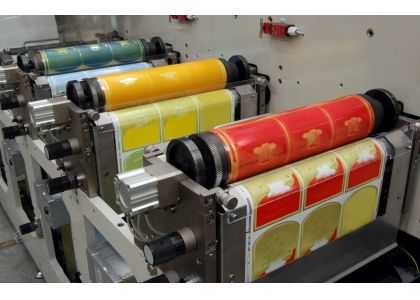Jctprint Machinery Co., Ltd

Special Considerations for Selecting and Using Flexographic Plate Cylinders
In flexographic printing, the plate cylinder is an essential component that directly influences the quality and consistency of printed materials. Proper selection and usage of the flexographic plate cylinder can optimize print outcomes and enhance operational efficiency for printing workers. This article highlights key factors to consider when selecting a plate cylinder and provides practical usage tips.
The flexographic plate cylinder serves as the mounting base for printing plates, ensuring precise registration and consistent pressure during printing. Its dimensions, material, and surface quality all affect the performance of the printing plates and, consequently, the print quality. By paying attention to these aspects, printing workers can achieve smoother operations and longer-lasting results.
Material Compatibility
Plate cylinders are typically made from aluminum, steel, or composite materials. Aluminum is lightweight and corrosion-resistant, making it ideal for high-speed printing. Steel offers superior durability, especially for long production runs, while composite materials can provide a balance of strength and weight.
Cylinder Dimensions
Accurate cylinder diameter and width are critical for ensuring compatibility with the press and maintaining proper tension during printing. Customized dimensions may be necessary for specific printing applications or substrates.
Surface Finish
A smooth and uniform surface finish is essential for achieving consistent plate adhesion and minimizing plate wear. Cylinders with precision-machined or chrome-plated surfaces can enhance durability and reduce maintenance needs.
Mounting Systems
Consider the type of plate-mounting system used in your press, such as adhesive tapes or magnetic systems. Ensure that the cylinder is compatible with the chosen method to simplify plate installation and removal.
Balance and Precision
High-speed printing requires perfectly balanced cylinders to prevent vibrations and ensure consistent print quality. Precision engineering and dynamic balancing are essential for minimizing defects and maximizing efficiency.
Ensure Proper Plate Mounting
Clean the cylinder surface thoroughly before mounting the plate to remove any debris or residue. Use high-quality mounting tapes to achieve secure adhesion and prevent air bubbles that can cause uneven printing.
Adjust Printing Pressure Carefully
Excessive pressure can damage both the plate and the cylinder, leading to inconsistent prints and higher maintenance costs. Adjust the pressure to achieve optimal ink transfer without overloading the components.
Regular Cleaning and Inspection
Clean the cylinder after each production run to prevent ink and adhesive buildup. Inspect the surface regularly for scratches, dents, or other signs of wear that may affect performance.
Use Protective Covers
When the cylinder is not in use, cover it with a protective sleeve or wrap to prevent dust and moisture from causing corrosion or damage.
Monitor Wear and Replace When Necessary
Over time, cylinders may lose their precision due to wear and tear. Monitor their performance and replace them promptly to avoid compromising print quality and productivity.
Work with Reliable Suppliers
Partner with trusted manufacturers like JCTPRINT to ensure high-quality, precision-engineered plate cylinders tailored to your specific needs.
The flexographic plate cylinder is a critical component that demands careful attention during selection and use. By focusing on factors such as material compatibility, surface finish, and proper maintenance, printing workers can optimize cylinder performance and enhance the overall efficiency of their operations. At JCTPRINT, we offer a range of customizable plate cylinders designed to meet the diverse needs of the printing industry. Let us help you achieve superior printing results and long-term reliability.